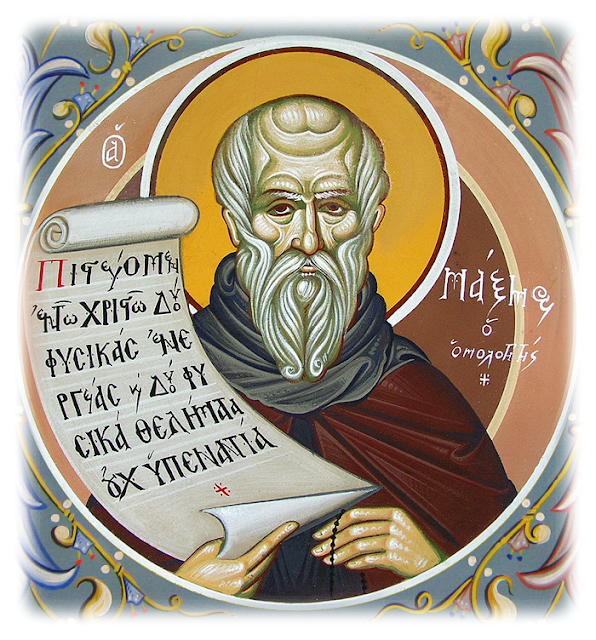
The primo uomo of the theological crisis, which would become known as Monoenergism and Monothelitism, was emperor Heraclius (610-642). His partner in the church-state symphony, Patriarch of Constantinople Sergius (610-638) played a role of an executive manager in the theological project, which was effectively emperor’s. This project was ecumenical and political simultaneously. After ascending to the throne, Heraclius faced numerous challenges from inside and outside of his empire: civil war and Persian invasion threatened its integrity. Disunity of his people on the grounds of attitude to Chalcedon worsened the situation. Therefore, to solve the problems he inherited, Heraclius had to address the issue of Chalcedon and to find ways of reconciling those who rejected the council with those who accepted it. Most emperors before Heraclius tried to tackle the same issue, without sustainable success however.
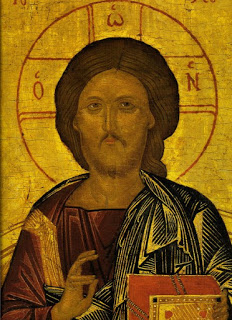
Heraclius’s own project of reconciliation was closest to the earlier attempts of Justinian. Like Justinian, Heraclius tried to construct a new formula of unity between divinity and humanity in Christ, which would not focus on the natures, but on the activity (ἐνέργεια) of Jesus. Justinian had elaborated such a formula through theopaschism, which became one of the foundations of his ‘Neochalcedonian’ project. Heraclius explicated the theopaschite doctrine and developed it to what we now call ‘Monoenergism.’ Heraclius’s Monoenergist Christological formula was composite: it included elements that were supposed to satisfy all the sides of the theological conflict. Thus, the Chalcedonians were expected to be pleased with the ‘two natures’ component of the formula. The nonChalcedonians, including eastern Syrians (‘Nestorians’) and western Syrians plus Egyptians (‘Miaphysites’), were to be happy with the ‘one energy’ element of it.
Before adopting the Monoenergist formula, Heraclius, sometimes personally and sometimes through his proxy Sergius, consulted all the interested target groups about whether they would be receptive of this formula. The most difficult and yet unavoidable side to deal with was Rome. Heraclius remembered the problems that Justinian faced when he had tried to sell his Neochalcedonian project to Rome. He was afraid that he would experience the same kind of resistance. To his surprise, however, no resistance followed, but Pope Honorius (625-638) expressed his understanding to the undertaking of Heraclius.
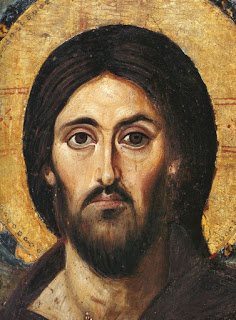
In response to the carefully-written letter of Patriarch Sergius1, Honorius did not reject the Monoenergist formula, but suggested what he believed to be a better alternative to it: “For we have not learnt from the Bible that Christ and his Holy Spirit have one or two energies; but that he works in manifold ways.” Honorius was not a Monoenergist, but rather a Polyenergist. Positive about his views on the activities of Christ was that he preferred to ascribe ἐνέργειαι to a single acting subject: “We must assert neither one nor two energies in the Mediator between God and men, but must confess that both natures are naturally united in the same Christ.” Honorius did not stop at the issue of activities, but made a step further – he suggested that Christ had single will: “Whence we recognise a single will of the Lord Jesus Christ, because our nature is truly assumed by the Divinity.” To prove his point, he suggested an argument, which would become popular among the eastern Monothelites: he identified Adam’s will with the sin belonging to his nature as a result of his transgressing God’s commandment: “We confess one will of our Lord Jesus Christ, since our nature was plainly assumed by the Godhead, and this being faultless, as it was before the Fall.” Unintentionally, the Pope triggered off a new phase in the development of Monoenergism, which in 638 was replaced by Monothelitism.
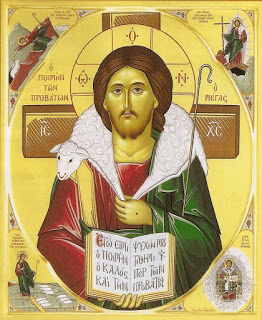
After the death of Honorius in 638, Severinus succeeded to the Roman see in 640. During his short pontificate, which lasted only around two months, he denounced the line of his predecessor regarding Monoenergism-Monothelitism. His successor, John IV (640 – 642), convened a council, which condemned Heraclius’s doctrine and anathematised those eastern Patriarchs who supported it. Rome eventually broke communion with Constantinople. The new emperor Constans II sent to Pope John two letters that survive in Arabic translation. Here he expressed intention to reconcile with Rome. Only six years later he made a half-hearted step to make this reconciliation possible, by issuing in 648 the Typos, a decree that prohibited any discussion on the issue of activity or will in Christ.
Maximus Confessor as Father of the Eastern and Western Churches
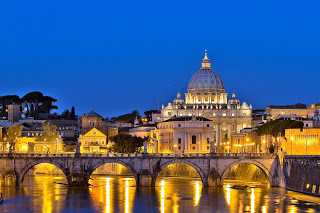
In the meantime, Rome started preparing a council, which would deal with this issue. The preparation work began under the auspice of Pope Theodore (642-649), but he died before the council could be summoned. The new Pope, Martin (649-655), inaugurated the council, which worked during October 649 in the Lateran basilica in Rome. The council of Lateran 649 was crucial in articulating theological argumentation against both Monoenergism and Monothelitism. The mind behind its acts was Maximus the Confessor’s, who had arrived in Rome in 646. One of the most productive parts of his life Maximus spent in the West. There, he found many supporters to his theological ideas, including Popes. The western church offered full support to his cause and to him personally. His life and his writing became interwoven into the life of the western church so closely that it would be incorrect to identify him as an ‘eastern’ Father. He was ‘western’ to the same extent. Even if he did not adopt a ‘western’ identity, he would definitely consider himself a φιλοδυτικός. He knew the church of Rome from within and he came to admire and to love it. Soon after the council of Lateran Maximus expressed his love and appreciation of the church of Rome in the most encomiastic words:
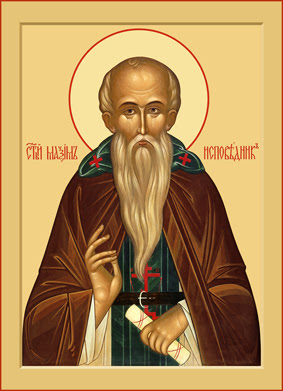
“All the ends of the inhabited world (…) look directly to the most holy Church of the Romans and her confession and faith as to a sun of eternal light, receiving from her the radiant beam of the patristic and holy doctrines.”
Maximus made a clear reference to Math 16:18, when he praised the church of Rome “as the sole base and foundation” of theological truth. For him, this church “has the keys of the orthodox faith.” A few years earlier, Maximus wrote similar words, which were preserved in Latin by Anastasius Bibliothecarius, about “the apostolic see, which, from the incarnate Word of God himself, as well as, in accordance with the holy canons and definitions, from all the holy synods of all the holy Churches of God, which are in all the world, has derived and possesses dominion (imperium), authority and power to bind and loose.”
These words at least partially reproduce the rhetoric, which started developing around the Roman see not long before Maximus. Through the allusion to Matt 16:18-19, Maximus’s words cohere with the statement of Pope Leo I (440-461) that Peter received from Christ precedence “over all the apostles and all the Fathers of the Church, so that, although there are many bishops and pastors among the people of God, Peter properly rules all those whom Christ originally also rules.” Not long before Maximus, another great Pope, Gregory I (590- 604) also identified the see of Rome with “the Church of the blessed Peter,” and its holders as successors of the “prince of the apostles.”
Nevertheless, it would be incorrect and anachronistic to conclude from this similarity of rhetorics that Maximus subscribed to the concept of papacy as it is known now. Thus, he was aware of fallibility of Popes in the matters of doctrine. There is a short letter, which he wrote on April 19, 658, to his disciple Anastasius. This is the last surviving piece of his writing. It was composed when even his ally, the church of Rome, succumbed to the pressure of the empire and the Pope Vitalian (657-672) restored communion with the Monothelite Patriarchs in the East. For Maximus, this was a moment of despair, which occurred in the year when he was tried in Constantinople for alleged treason and then exiled for four years. At that time the Monothelite Patriarch of Constantinople Peter (654-66) asked him, rather tauntingly: “What Church do you belong to? Constantinople? Rome? Antioch? Alexandria? Jerusalem? See, all of them are united, together with the provinces subject to them. If, therefore, you belong to the catholic church, be united, lest perhaps you devise a strange path by your way of life and you suffer what you don’t expect.”
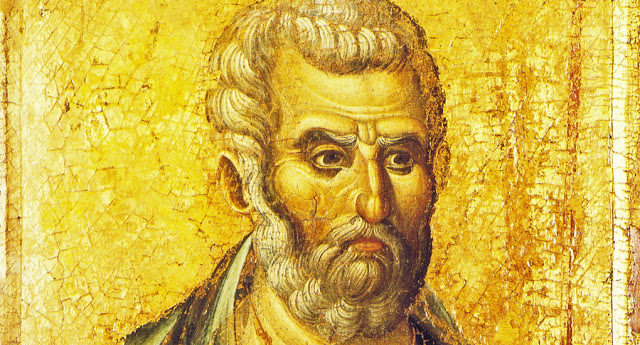
Maximus replied to this taunting: “The God of all pronounced that the Catholic Church was the correct and saving confession of the faith in him when he called Peter blessed because of the terms in which he had made proper confession of him. But let me learn the confession on which the unity of all the churches was effected, and if it was effected properly I shall not be estranged from it.”
He thus recognised that successors of Peter may err, but the faith of Peter cannot vanish from the church. Maximus did not subscribe to the infallibility of Popes in the matters of faith and, possibly, to other elements of papacy that developed into the medieval model of primacy. In this regard, I agree with the words of Andrew Louth that Opuscula and do not provide sufficient support for the posterior interpretation of Roman papacy. Maximus here does not speak about primacy of the bishop of Rome, but about the role of the Church of Rome in upholding Orthodoxy of faith. What Maximus appreciated about the church of Rome most was its firm hold of Orthodoxy of doctrine, as it was demonstrated by such great Popes whom he knew personally as Theodore and Martin. It may sound reductionist, but for Maximus theological truth was one of the most important criteria of the church. When during the trial he was accused of splitting the church, he made a remark: “If the one who states what is in Scripture and the holy Fathers splits the Church, what does someone do to the Church who annuls the teachings of the saints, without which the Church’s very existence is impossible?”
There was another point that Maximus probably appreciated about the Church of Rome – its resistance to the abuses of the church-state symphony. Monoenergism-Monothelitism was certainly such an abuse. It was a political project, initiated by a politician for political ends, and accomplished with the means of political coercion. The church and its hierarchs were used as decorations and instruments in this project, to give it an appearance of symphonic consent of the church. It seems that Maximus was not against symphony as such. But he certainly stood for some distinctiveness and self-sufficiency of the church in its relationship with the state. As Andrew Louth remarks: “For Maximos, the Church (…) is a sovereign body, with its own institutions. However deeply bound up with the Christian Empire it might be, it may not be confused with it.”
Maximus rebuked interference of the state to the sacrosanct domains of the church, including doctrine and liturgy. Remarkable in this regard was an episode during his trial, when he was asked about the role of the emperor in the church. Maximus, first, denied the emperors the right to interfere in the matters of doctrine: “No emperor was able to persuade the Fathers who speak of God to be reconciled with the heretics of their times by means of equivocal expressions.” This is because it was not the business of civil authorities “to make an inquiry and to define on the subject of the saving teachings of the catholic church,” but an exclusive responsibility and “the mark of priests.” Then he was asked if the Christian emperor had a responsibility over the doctrine on the pretext of being also a priest. He replied to this categorically that the emperor is not a priest – he does not perform sacraments and does not “wear the symbols of the priesthood, the pallium and the Gospel book, as [he wears the symbols] of imperial office, the crown and purple.”
This position of Maximus cohered with the famous dictum of Pope Gelasius (492-496) from his letter to the emperor Anastasius II (491-519), where the pope draw a demarcation line between “the sacred authority of priests and the power of kings.” This standpoint of Gelasius should not be understood exaggeratively, as if there was a radical difference between the attitudes of the western and eastern churches to the state: both parts of Christianity enjoyed more or less symphonic relations with the state. However, the western church certainly demonstrated more sensitivity to the violations of the demarcation lines between the church and state. Maximus shared these western sensitivities and witnessed to them in his own eastern context.
Conclusion
Maximus’s vision of the church, a vision that features sincere appreciation of the Roman see and its role in the universal church, should be appreciated by the Catholic-Orthodox dialogue and those who seek reconciliation between the two traditions. His personality and his ecclesiology can help bridging the gap between these traditions. This gap emerged because both traditions deviated from the vision, which was articulated by Maximus and which was in fact shared by many in the church of the first millennium.

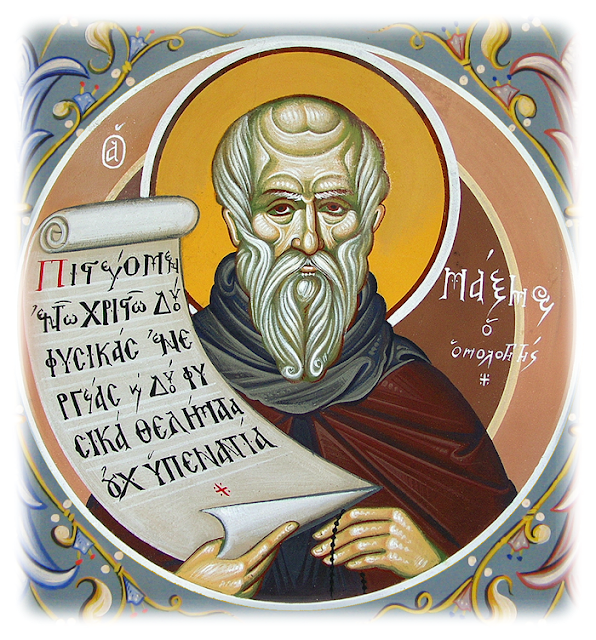
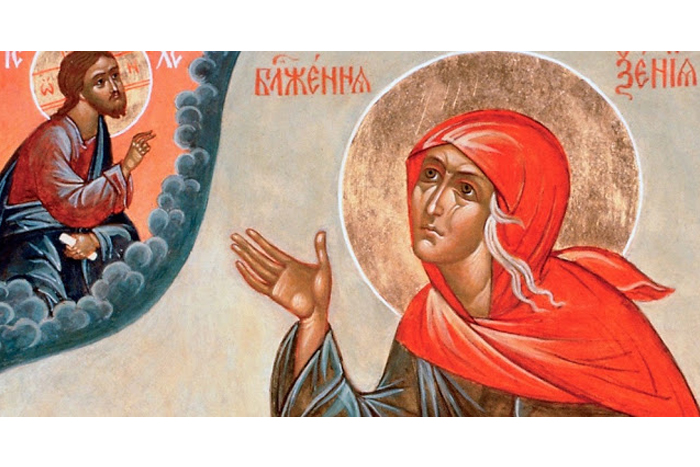


>>>Thus, the Chalcedonians were expected to be pleased with the ‘two natures’ component of the formula. The nonChalcedonians, including eastern Syrians (‘Nestorians’) and western Syrians plus Egyptians (‘Miaphysites’), were to be happy with the ‘one energy’ element of it.<<<
One rather important error there…they use Miaphysite when they should have used Monophysite. Miaphysitism is not heresy, but monophysitism is.
>>>Maximus’s vision of the church, a vision that features sincere appreciation of the Roman see and its role in the universal church, should be appreciated by the Catholic-Orthodox dialogue and those who seek reconciliation between the two traditions. His personality and his ecclesiology can help bridging the gap between these traditions. This gap emerged because both traditions deviated from the vision, which was articulated by Maximus and which was in fact shared by many in the church of the first millennium.<<<
So the Orthodox Church erred from the Fathers? Frankly, most Orthodox are well aware of & acknowledge the primacy of honor of the papacy in the 1st millennium. The problem is that it was the papacy that mutated that primacy into one of supremacy. How does this constitute an error on the part of the Orthodox?
Young Christians normally attempt to spiritualize the letters to the seven churches as they retrace History with total confusion. Many young and even mature Christians are unaware that the "seven churches" were literal historical churches in Asia.Open Heavens for 2019